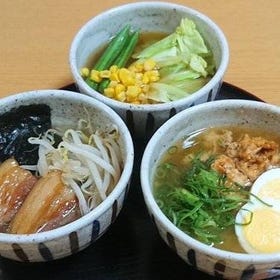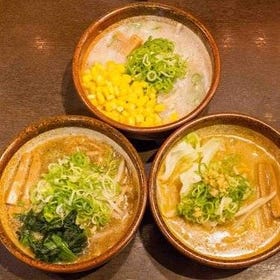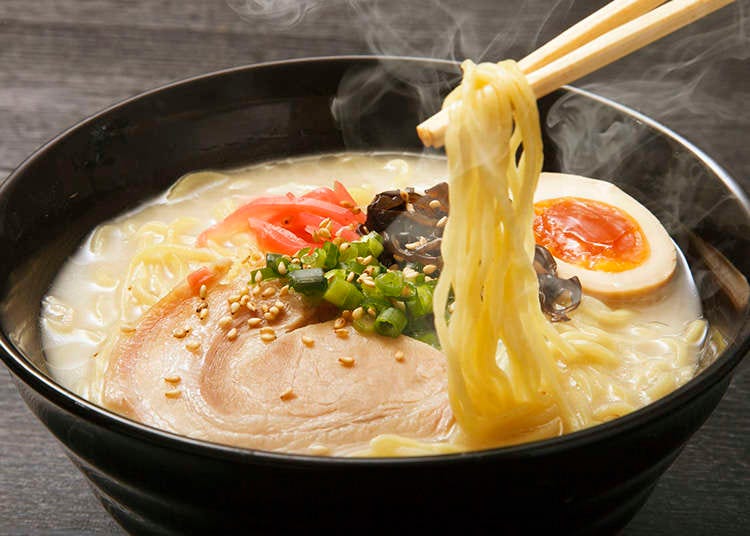
Ramen in Japan: Explore the Flavors, Styles & Regional Specialties (With Food Guide)
- Written by: Sohail Oz Ali
Ramen is more than a dish in Japan—it’s a culinary art and cultural phenomenon. From rich broths to unique regional styles, discover why ramen shops attract long lines and how each bowl offers a one-of-a-kind taste experience.
- Table of Contents
Popular types of ramen in Japan
Before getting into the details of each type of ramen, the main thing to note is the soup broth is usually made from pork, chicken, beef or fish bones that are boiled for a long time as well as a seasoning that is mixed in with it to create a distinct taste.
The type of noodles used in ramen are made with flour and a salty alkaline liquid called kansui. It is kansui mixed in with other ingredients and the flour that is central to the creation and classification of ramen.
You will notice that some soup broths are very thin and clear while others are cloudy and thick. As well, the variety of noodles from thick to thin, straight to curly are all different forms of the ramen noodle. The color, texture, flavor and look of a bowl of ramen can be quite different yet still fall into the ramen category as long as both noodles and soup broth follow the ramen rules.
Here are some of the most popular and distinct types of ramen you will come across during your adventures in Japan. You will also find some shops that play with ingredients and sometimes mix and crossover ramen types.
Shoyu Ramen
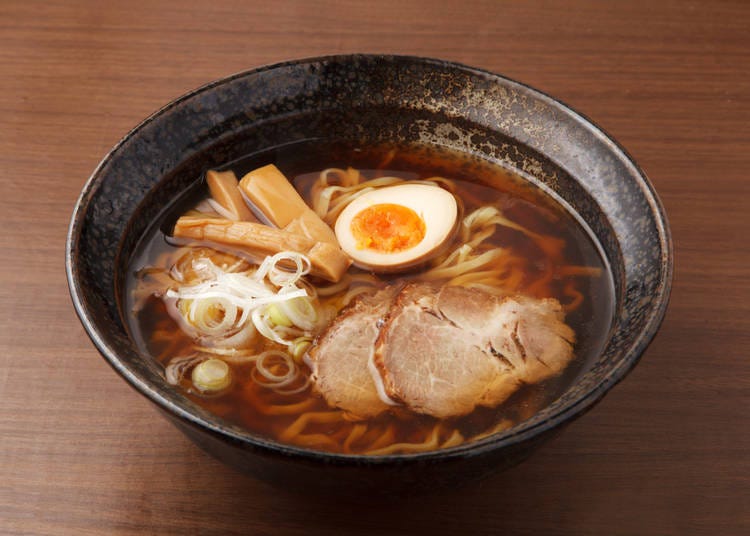
Shoyu is a popular ramen broth in the Kanto region of Japan. With roots in Yokohama, it is most likely the type you will first come across when visiting a ramen shop. Shoyu means soy sauce and has a clear brown appearance with a deep, rich soy sauce aroma. Usually made from chicken bones, beef, pork, or seafood is sometimes also used in the broth.
The taste is usually salty and light with a clear broth, and the noodles are typically curly and on the slimmer side. Shoyu ramen is one of the oldest known ramen in Japan, closely resembling the original Chinese version that first came to Japan. Most likely, if you enter a ramen shop and there is no specification of the type of ramen, you will be served shoyu ramen.
The flavor and taste are filling but not too strong, so it’s a perfect starter ramen for those just beginning their ramen experience.
Shio Ramen
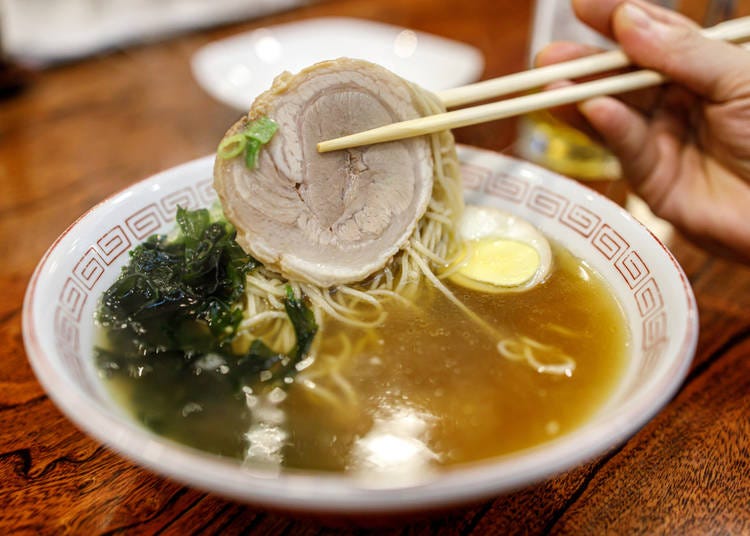
Shio means "salt" in Japanese, so you can already guess an essential part of this type of ramen. The broth is usually chicken or pork-based and is seasoned with salt. The broth is a light, clear, yellow color and is obviously salty - so for those with high cholesterol or sodium-based issues, you might not want to order this type of ramen. Shio ramen usually uses long straight noodles rather than curly ones.
Miso Ramen
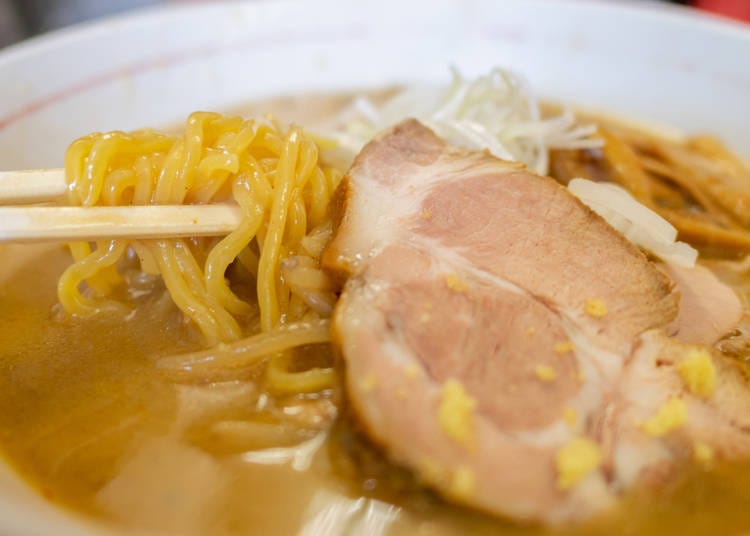
Miso ramen uses miso paste made of soybeans as the seasoning. Created in Hokkaido, miso ramen has a robust flavor as the miso paste is creamy and tangy. The broth is also chicken and pork-based and has a much darker brown and rich taste making it a very hearty and filling meal. The flavor changes depending on the miso paste used, so miso ramen is very versatile and goes well with many different ingredients and toppings.
Tonkotsu Ramen
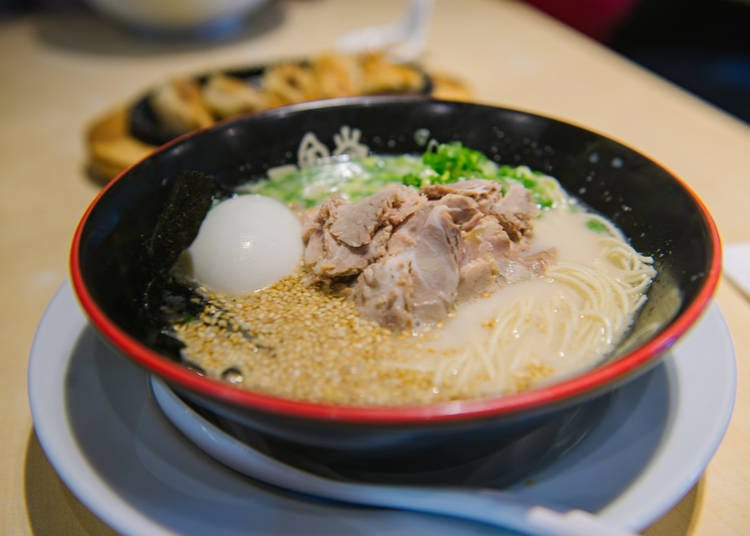
Tonkotsu is a boiled pork bone broth that's milky and somewhat thick. Tonkotsu ramen also has a distinct pork smell that may or may not turn you off. Thin, straight noodles are popular with this type of ramen. Quite popular in the Kyushu area of Japan, Tonkotsu ramen is widely recognized worldwide.
Tantan-men
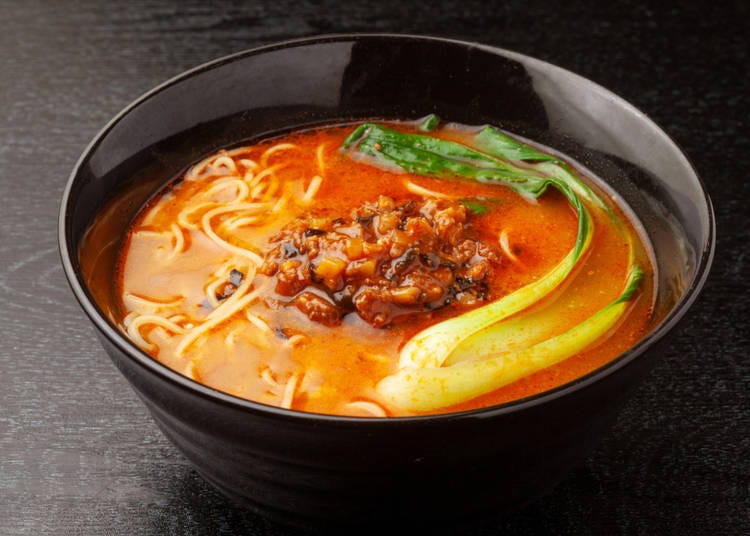
Although most people will separate ramen into the four major categories above (Shoyu, Shio, Miso, Tonkotsu), this is the Japanese take on the Sichuan dan dan noodle dish. Based on pork broth, Tantan-men has a spicy, creamy broth that has a dollop of minced meat, sesame paste, and chili oil. It can incorporate peanut powder and miso. The red and thick soup served with minced pork on top gives the ramen a stew-like texture and a spicy, salty flavor.
Tsukemen
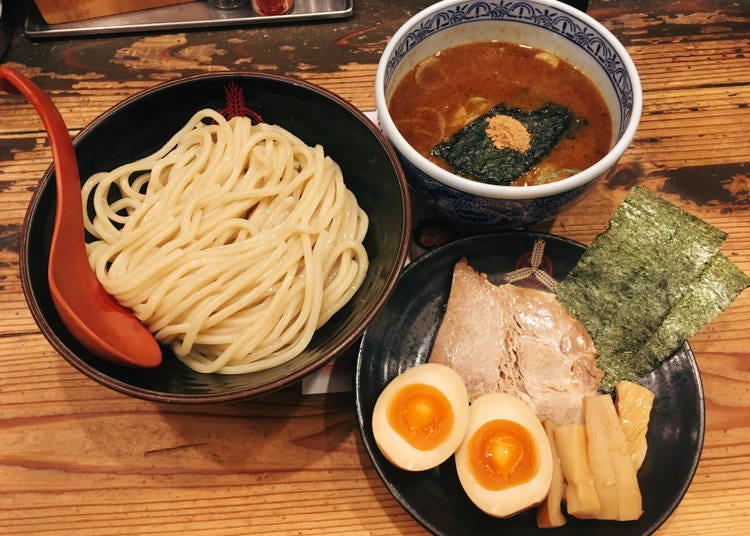
Tsukemen is a different version of “dipping” ramen when the noodles and soup broth are served separately and are eaten by dipping the noodles into the soup broth as you eat. The noodles are usually thicker and chewier as they have not been soaking in the broth and are washed in cold water before serving. The broth itself is also a lot more concentrated and stronger as the noodles are dipped into it before eating.
The noodles and soup broth can be served hot or cold and the broth has a variety of different taste and ingredient options depending on the shop.
Instant Ramen
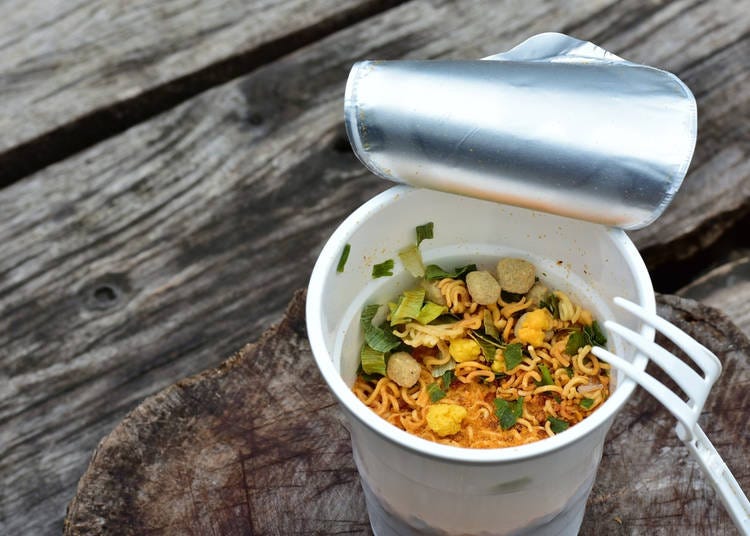
Another type of ramen that was originally created in Yokohama but which has spread worldwide because of its convenience, price, and taste is Instant Ramen. Whether they be in a cup or in packets, the freeze-dried noodles and powdered packets of seasoning require only hot water and a few minutes to soak.
Quick, cheap, and delicious, this type of ramen is popular among students and those looking for a quick meal on the go. There are many flavors and styles of ramen as well, making it an “instant” hit with noodle lovers around the world.
Common Japanese ramen toppings
Another great way to distinguish your ramen and add a variety of flavor is with the vast amounts of toppings available. Here are some of the most popular toppings Japanese people add to their ramen.
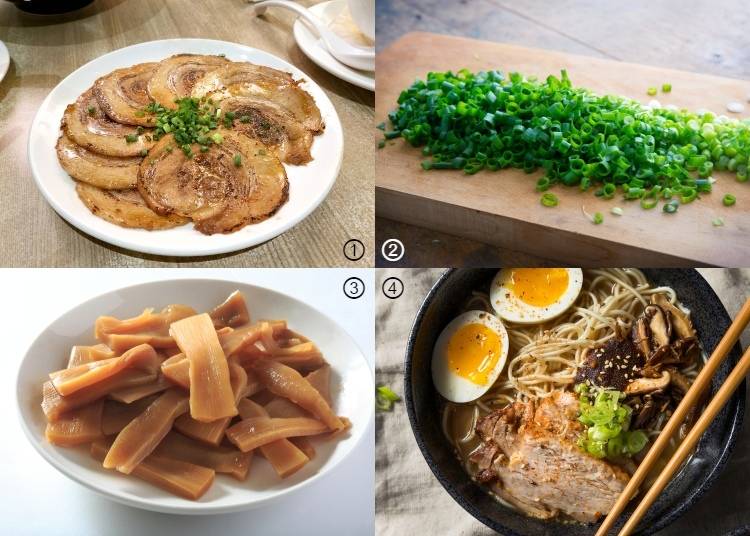
1. Chashu/Char Siu Pork
Many bowls already come with this topping but if not it is definitely a popular topping as an add on. Chashu is roasted or braised fatty pork that has been soaked and simmered in a sweet soy sauce seasoning.
2. Negi (Leek)
Chopped green onions or leeks are also usually a standard topping already sprinkled atop the noodles adding flavor, aesthetic, and texture variety. Once again, if your ramen doesn’t already include it, adding this topping will enhance texture and taste in the ramen.
3. Menma
Menma is a preserved and fermented bamboo shoots with a salty flavor and slightly crunchy texture that goes well with the soup broth and noodles.
4. Eggs
Sliced in half or sometimes whole, eggs (tamago in Japanese) are a popular topping for ramen. Boiled, lightly boiled, or marinated in a sweet soy sauce flavoring, eggs add to the heartiness of a bowl of ramen.
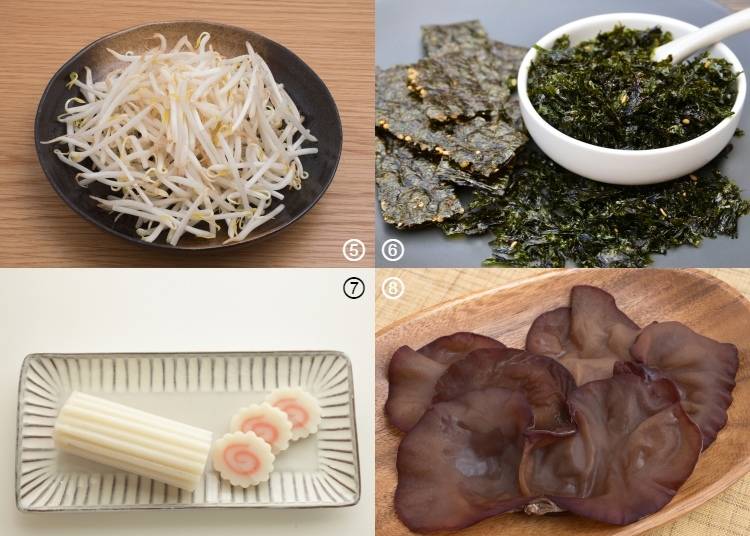
5. Bean sprouts
Called moyashi in Japanese, bean sprouts are a cheap and popular ingredient in many Japanese foods like stir-fry, rice and soups. They are served either cooked or raw with ramen and have a nice crunch to them.
6. Seaweed
Many people also enjoy adding different types of seaweed like nori or wakame to their ramen for added taste and as a healthy topping choice as seaweed is high in fiber, vitamins, and minerals.
7. Kamaboko and Naruto
A cured and processed fish cake product, kamaboko is sliced thinly and served atop ramen. The Naruto version is a white and pink spiral whirlpool designed fish cake that adds color to the overall ramen appearance.
8. Kikurage or Wood Ear Mushrooms
These thin, dark, floppy ear-shaped mushrooms are an elastic and chewy ingredient popular in China in food and as herbal medicine. They are also a great addition to different kinds of ramen.
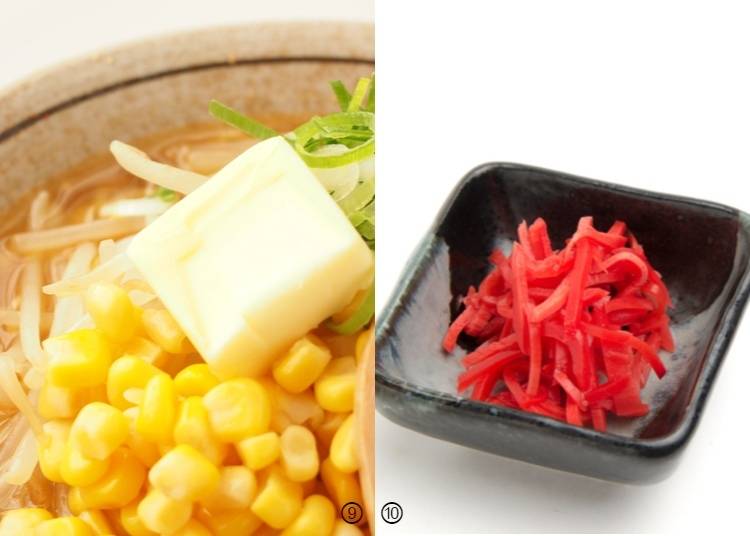
9. Butter and Corn
Originally gaining popularity in Hokkaido butter and corn niblets are popular additions to ramen, particularly miso ramen. Sometimes the corn is simmered in butter and other times thick slices of butter are placed on the ramen.
10. Beni Shoga
Beni shoga is often found in tonkotsu ramen. Pickled in plum vinegar, the reddish ginger has a strong sour flavor.
There are many other toppings like cabbage, kimchi, spinach, Japanese plum, and other pickled products that many regions and ramen chefs experiment with as well.
Common ramen side dishes
Here are some of the commonly ordered side dishes that accompany ramen most often in Japan.
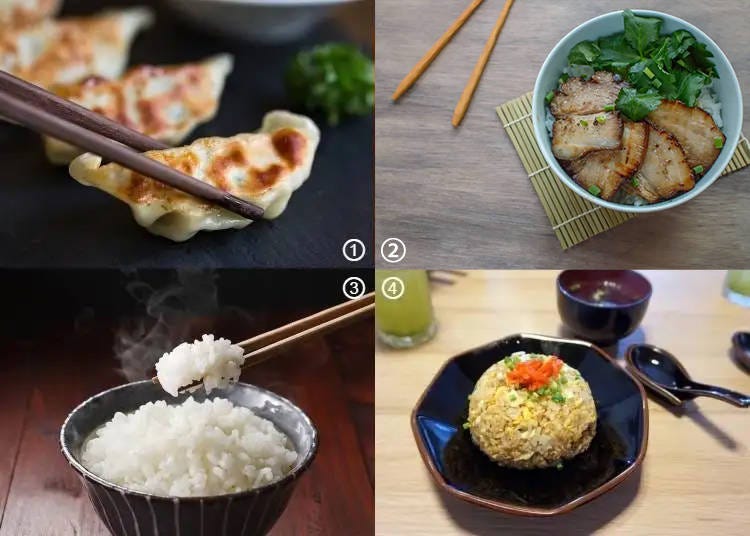
1. Gyoza
A definite partner to ramen is gyoza or fried dumplings. Whether it be the pork or garlic filled version, these greasy crescent-shaped dumplings dipped in a soy sauce and vinegar mixture are perfect and filling with a bowl of ramen.
2. Chashu Don
Along with the chashu that is already placed on the ramen, another option is to have chashu on a bed of rice as a side dish. The braised pork and rice combination is filling and delicious.
3. Plain Rice
Many ramen shops offer a bowl of rice along with ramen with their lunch or dinner sets which might sound like carb overload with rice and noodles but is a popular choice among Japanese people.
4. Fried Rice
Different kinds of fried rice are also available at most ramen shops as ramen originated from China and adding fried rice compliments to the Chinese ambiance.
Regional Japanese Ramen Varieties
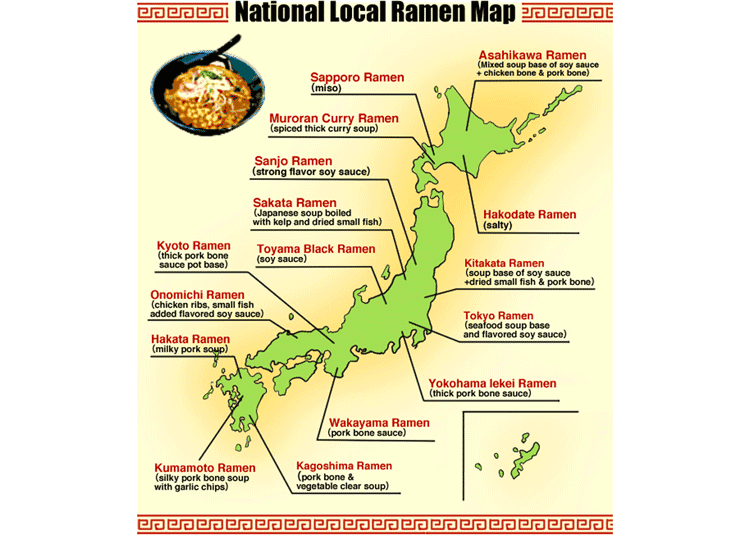
Depending on what part of Japan you visit, you will find that each area has its specialty and distinct ramen type. Some use different meats or vegetables in their stock, others have local ingredients and toppings, while some infuse different seasonings, broths, and toppings to create a totally new and fresh take on ramen altogether. Here are just some of the few most famous regional ramen varieties.
Tokyo Ramen
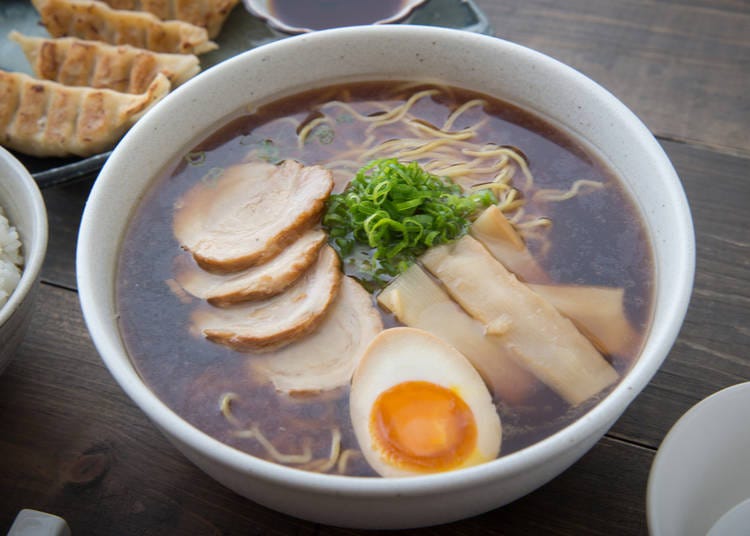
As mentioned previously, Tokyo ramen was one of the first types to come about after the introduction of ramen noodles to Japan from China. A shoyu-based ramen, the soup is clear and brown and the noodles are usually curly and thin. When visiting a ramen shop, this is most likely the main ramen that will be served if the menu doesn’t state otherwise.
Sapporo Ramen
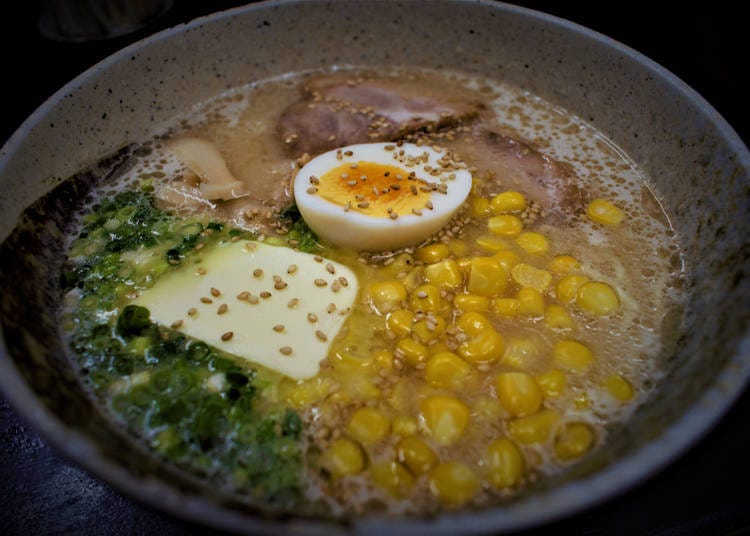
Sapporo ramen is a much more hearty and warming ramen, most likely created to deal with the harsh winters of North Japan. A miso-based ramen that is salty and rich, it also comes with a slab of butter, corn, sprouts, and sometimes fresh seafood from Hokkaido, making it a filling and loaded meal.
Fukushima Kitakata Ramen
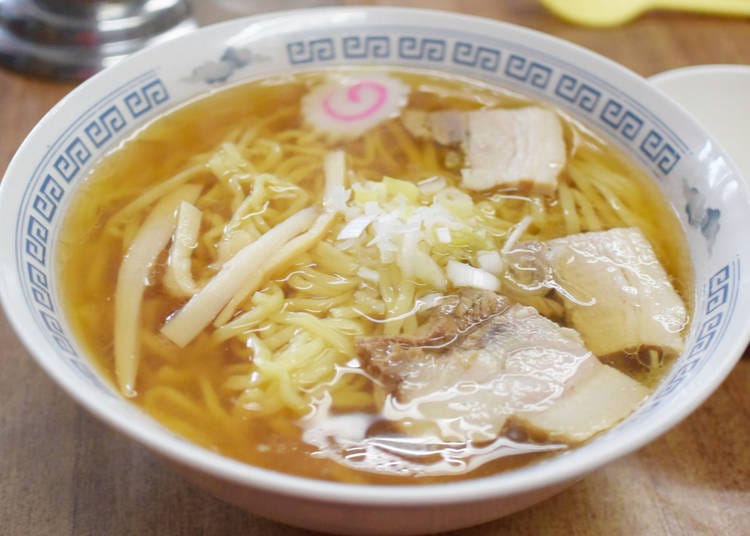
If you are looking for a lighter soup and are a fan of noodles then Kitakata ramen might be for you. Made from a shoyu base and chicken stock, pork bones and sardines, this clear thin soup is paired with thicker, chewier noodles and toppings of negi, menma and chashu.
Hakata Ramen
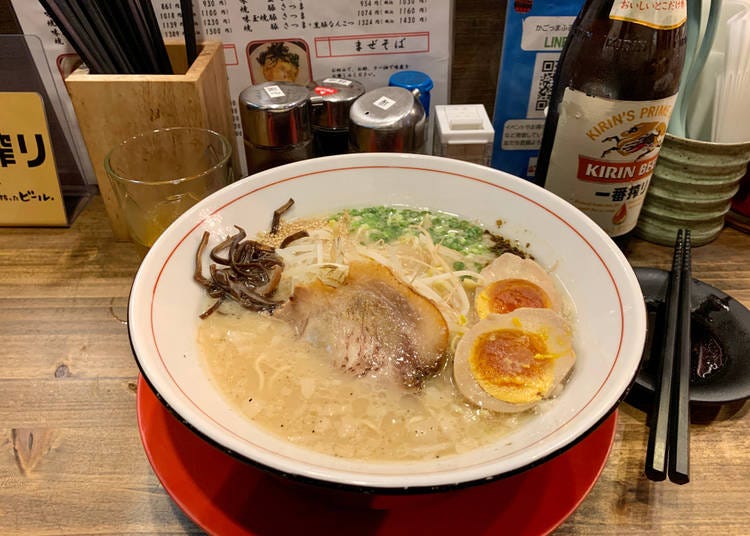
A tonkotsu-based ramen, it is a thick and rich white soup with hard, straight noodles, that originated in Fukuoka but has become popular across Japan. The milky cream soup dish is often topped with chashu, negi, wood ear mushrooms and beni shoga.
Wakayama Ramen
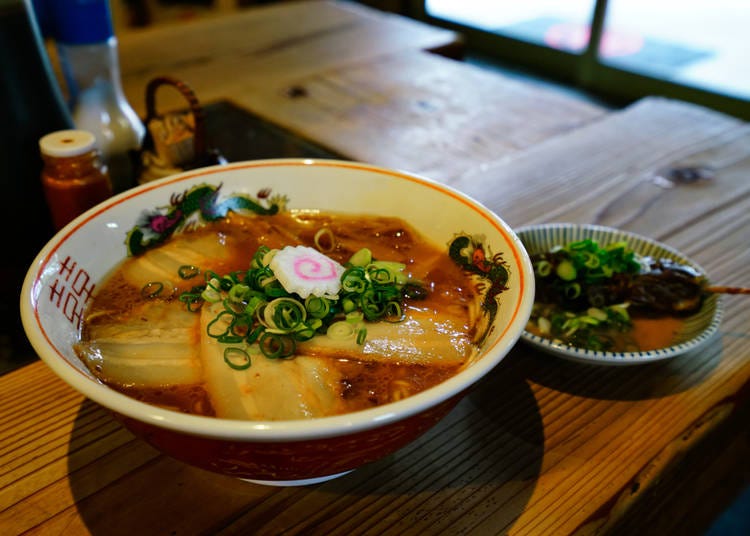
Also called chuka soba, Wakayama ramen is also a tonkotsu-based ramen which has thin noodles but also mixes in a shoyu-base as well for added distinction. Toppings are usually negi, menma, chashu and kamaboko, sliced processed fish.
How to order ramen in Japan
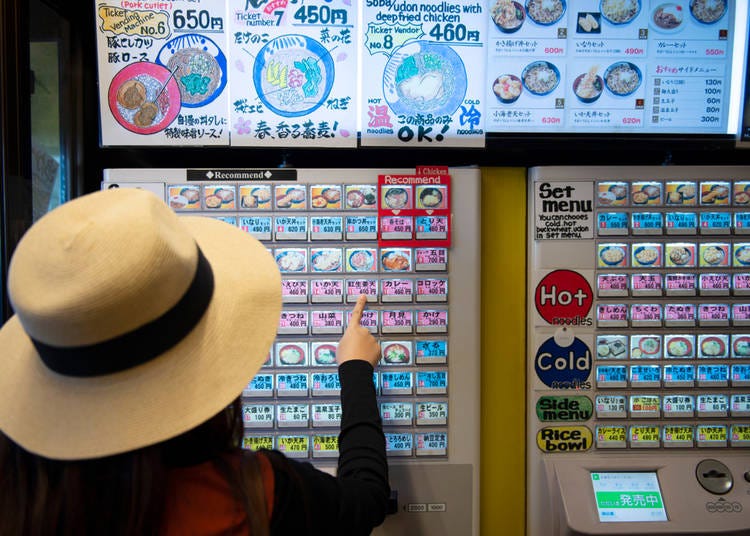
Ramen shops are usually pretty casual and made for quick order, eating and exiting. Many people also eat ramen when they are on the go so you will find most ramen restaurants have a lot of counter space for single diners as well as tables. Menus in ramen shops tend to have a lot fewer options than other restaurants as most people are there for the basic ramen, gyoza, and rice sets.
Before finding a seat you might want to check if there is a vending machine by the entrance. For convenience and efficiency, many ramen shops ask customers to order their specific orders in advance via a vending machine before finding a seat. The staff takes the ticket and brings the order to you. Since payment is already taken care of, people can eat at their own pace and leave after eating without hassle.
If there is no vending machine, a staff member will take your order, bring your order to you and after you eat you will bring the bill to the counter for payment like most restaurants in Japan.
How to eat ramen in Japan - manners
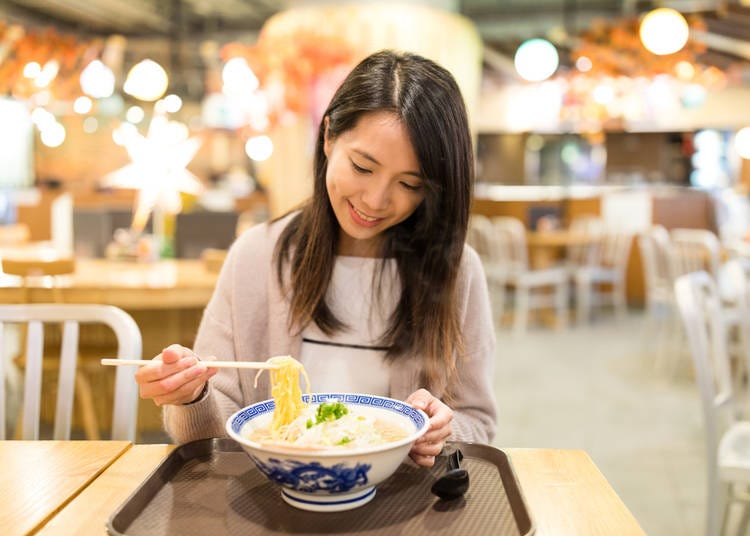
In terms of how to eat ramen, you will be provided with chopsticks and a Chinese style ladle looking spoon. The spoon is used to eat the soup broth as well as toppings like eggs. The chopsticks are used for the noodles and most Japanese people will slurp their noodles loud and proud. This is said to be done for two reasons. First, by slurping the noodles, they can be cooled as they are placed in your mouth to avoid burns. And second, it is said that slurping noodles enhances the flavor of the ramen.
There are no steadfast rules about etiquette as ramen, in general, is known as quick, cheap and casual food. Picking up the bowl to slurp the soup is fine as well.
Many restaurants also provide plastic bibs to avoid stains on clothing that may occur from the ramen soup when slurping.
Typical ramen customization options
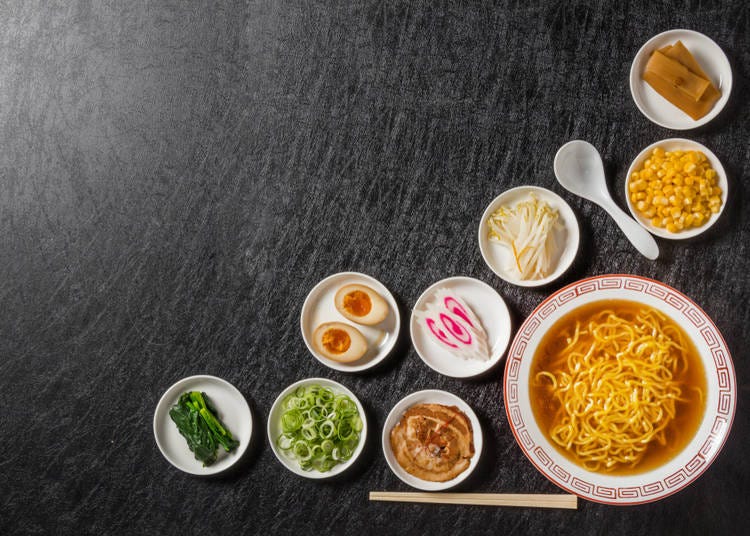
Depending on the ramen shop, you might get asked a variety of questions about the ramen that you should keep in mind. For example, some ramen shops might ask you if you prefer a chicken or a pork-based broth or for spicy ramens the spice level you would like. Some shops also allow you to customize noodle thickness, firmness and amount.
And of course, there are many toppings available that you may add to your order as you see fit.
Now that you have become well versed in ramen noodles, soups, sides, toppings, and regional varieties, you can travel to Japan and experience a variety of different ramens. Also, as newly appointed ramen connoisseur you will be able to order, customize and differentiate between the different types of ramen options you might find when heading into a ramen restaurant.
And a better understanding of ramen culture in Japan will no doubt give you a step above other tourists in Japan. You will be able to order and even prove your knowledge of ramen bringing you closer to Japanese people who adore and indulge in ramen. You will now be able to order your ramen and eat it too.
Popular ramen tours
Ramen destinations in Japan
-

-
Address
2-14-21, Shinyokohama, Kouhoku-ku, Yokohama-shi, Kanagawa, 222-0033
View Map -
Nearest Station
Shin-Yokohama Station (Tokaido Shinkansen Line / JR Yokohama Line / Line 3 (Yokohama Blue Line) / Sotetsu Shin-Yokohama Line / Tokyu Shin-Yokohama Line)
5 minutes on foot
- Phone Number 045-471-0503
-
Address
2-14-21, Shinyokohama, Kouhoku-ku, Yokohama-shi, Kanagawa, 222-0033
-

-
Address
The Tokyo Station first Avenue the first floor of the basement south street, 1-9-1, Marunouchi, Chiyoda-ku, Tokyo, 100-0005
View Map -
Nearest Station
Tokyo Station (Tokaido Shinkansen Line / Hokkaido Shinkansen Line / Tohoku Shinkansen Line / Akita Shinkansen Line / Yamagata Shinkansen Line / Joetsu Shinkansen Line / Hokuriku Shinkansen Line / JR Tokaido Main Line / JR Yokosuka Line / JR Sobu Main Line / JR Sobu Main Line (Rapid) / JR Keihin-Tohoku Line / JR Yamanote Line / JR Chuo Main Line / JR Keiyo Line / JR Ueno Tokyo Line / Tokyo Metro Marunouchi Line)
1 minute on foot
- Phone Number 03-3210-0077
-
Address
The Tokyo Station first Avenue the first floor of the basement south street, 1-9-1, Marunouchi, Chiyoda-ku, Tokyo, 100-0005
-

-
Address
8-25, Masumicho, Ikeda-shi, Osaka, 563-0041
View Map -
Nearest Station
Ikeda Station (Hankyu-takarazuka Main Line)
5 minutes on foot
- Phone Number 072-752-3484
-
Address
8-25, Masumicho, Ikeda-shi, Osaka, 563-0041
-

-
Address
2-14-21, Shinyokohama, Kouhoku-ku, Yokohama-shi, Kanagawa, 222-0033
View Map -
Nearest Station
Shin-Yokohama Station (Tokaido Shinkansen Line / JR Yokohama Line / Line 3 (Yokohama Blue Line) / Sotetsu Shin-Yokohama Line / Tokyu Shin-Yokohama Line)
5 minutes on foot
- Phone Number 045-471-0503
-
Address
2-14-21, Shinyokohama, Kouhoku-ku, Yokohama-shi, Kanagawa, 222-0033
Related Articles
Sohail Oz Ali is a Canadian Youtuber, author and blogger who has lived in Hokkaido, Nagoya and now resides in Chiba. Between visits to Karaoke and revolving sushi restaurants, he enjoys walking his dog, watching Japanese love dramas and teaching English. You can also find him roaming the streets of Japan looking for the next big YouTube video trends.
- Category
*Prices and options mentioned are subject to change.
*Unless stated otherwise, all prices include tax.
Recommended places for you
-

RAHMEN'ANDOONIGIRIEDEIH
Ramen
Shinjuku
-
Goods

Yoshida Gennojo-Roho Kyoto Buddhist Altars
Gift Shops
Nijo Castle, Kyoto Imperial Palace
-

Kambei Sannomiyahonten
Yakiniku
Kobe, Sannomiya, Kitano
-

SHOUHEINarukozaka
Ramen
Shinjuku
-
Appealing

Rukku and Uohei
Izakaya
Sapporo / Chitose
-

TOUKYOUTORIPAITANRAHMENYUKIKAGEASAKUSA Main store
Ramen
Asakusa
-
Ad

Tokyo Comedy Bar: Where Jokes and Craft Beer Flow Freely
-

Hotel Green Plaza Hakone (Review): Soak in the View of Mt. Fuji from an Open-Air Hot Spring
by: Mayumi Kawai
-

Discover Japan Duty Free GINZA: A Unique Shopping Experience in the Heart of Tokyo
by: Chehui Peh
-

Via Inn Prime Osaka Kyobashi Mizukinoyu: A Convenient Hotel Near Osaka Castle with Open-Air Baths and Nearby Sightseeing
by: Yotsuka Hizuki
-

There’s a new museum in Japan, but almost all of its location is a secret
-

23 Quirky and Fun Things to Do in Akihabara
by: Himanshi Shah
-

3 Delicious Shibuya Ramen Shops - Serving More Than Just the Classics
-

Best Ramen in Tokyo? 3 Must-Try Ramen Shops in Tokyo for Noodle Lovers!
-

We Board Japan's 'Setsugekka' Resort Train And Have An Incredible Journey Through The Heartland
-

Noodle Revolution: Japan's Experts Reveal '2023 Best Ramen & Latest Trends'
by: Miyu Shimada
-

Hokkaido Lavender Fields: 6 Best Places in Furano to See Japan's Dreamiest Purple Meadows
by: Nobuka Kawashima
-

Aizu-Wakamatsu Sake Crawl: Enjoy the Heart of Fukushima's Sake Culture
- #best sushi japan
- #what to do in odaiba
- #what to bring to japan
- #new years in tokyo
- #best ramen japan
- #what to buy in ameyoko
- #japanese nail trends
- #things to do japan
- #onsen tattoo friendly tokyo
- #daiso
- #best coffee japan
- #best japanese soft drinks
- #best yakiniku japan
- #japanese fashion culture
- #japanese convenience store snacks















